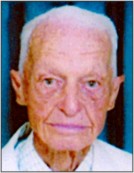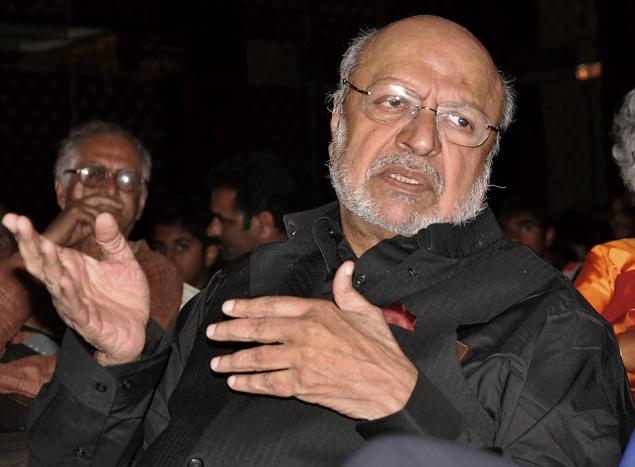By Dr. T.S. Ravishankar Director (Epigraphy)
The Epigraphy branch which has been in existence in Mysore since 1966, celebrated the completion of its 125th year on Mar. 14, . It is one of the oldest institutions of our country. Located amidst sylvan surroundings in a beautiful and imposing building at Hebbal, this branch is silently ushering in a revolution in the academic history of our country. It is one of the important wings of Archaeological Survey of India.
Realising the importance of the inscri-ptions which are abundantly available in every nook and corner of our vast country for writing the history of India, the farsighted Britishers established this branch in 1886 at Bangalore. Since then this branch has been copying inscriptions and publishing them. These inscriptions are useful in unraveling the history of our past. In fact, we do not know anything about the activities of our mighty rulers of the past but for these in-scriptions. So far, nearly 75,000 inscriptions are discovered and copied by this department and many more ought to be copied.
India is singularly rich in epigraphical wealth. Inscriptions found in our sub-continent are far-flung in time and space. As a source of Indian history, inscriptions are very important because in most cases they describe contemporary events, thereby imparting authenticity to the history based on them. Several dynasties that ruled over large territories of Indian sub-continent right from the imperial Mauryan dynasty to Vijayanagar and post-Vijayanagar dynasties left a rich legacy of inscriptions to us.
Important dynasties that ruled over different terri-tories of India like Mauryas, Kshatrapas, Guptas, Vakatakas, Kadambas, Chalukyas, Rashtrakutas, Cholas, Seunas, Pandyas, Hoysalas, Vijayanagara and Wadiyars have left behind a lot inscriptions in the form of stone inscriptions and copper plates which are useful in reconstructing the history of not only these dynasties but also their territory.
In fact, we hardly know anything about the great Mauryan ruler Ashoka but for his edicts which are available in various parts of our country. Most of his edicts address him only as Devanampiya and Piyadasi and his original name was not known until the discovery of Maski, which is in our State and which calls him as Ashoka. We know this emperor had a name Ashoka only from this edict. Again Nittur, Odegolam and Sannathi in Karnataka yield edicts of this great ruler, which clearly proves the spread of his empire if not, at least that Ashoka wanted to spread his message of Dhamma here.
The golden age in Indian history under Gupta rulers can be understood from their inscriptions such as Allahabad pillar prasasti, Mehrauli iron pillar and others. We know activities of the Kadmaba kings only from the inscriptions engraved by them. We know their capital Banavasi was a centre of learning and culture only from their records. Likewise, the Aihole inscription of Pulakesin II which narrates in detail the political career of the Badami Chalukayan king refers itself to the composer of the record Ravikirti, a Jaina poet, claiming equal fame to that of Kalidasa and Bharavi.
The celebrated Uttiramerur of inscriptions of the Chola ruler Parantaka I (921.C.E.) describes how elec-tions for the local civil govt. were conducted. The earliest reference to a dancer is found from an inscri-ption from Jogimara cave (3rd Cen B.C.E). It mentions one Sutanuka, the temple dancer and her lover Devadatta, a sculptor from Varanasi. Kudumiyanmalai (Tamil Nadu) inscription is one of the earliest inscri-ptions on music. It belongs to the seventh century C.E. and it records the musical notes as understood and practiced during the time of the Pallavas.
The development which the art of music had reached in 11th century B.C.E. can be gathered from an inscription of Chalukya king Vikramaditya from Galaganatha, Haveri taluk and district, which mentions a certain Mokhari Barmmayya, a musician of high order, entitled Batti-saraga bahu kala Brahma (skilled in thirty-two ragas).
The character and personality of the great Vijayanagara emperor Krishnadevarya is known from inscriptions left behind by him. Apart from being political documents these inscriptions also throw welcome light on the social, economic, religious and cultural life of the people of the past.
These inscriptions are written in different scripts like Brahmi, Kharoshthi, Siddamatrika, Nagari, Telugu-Kannada, Tamil, Grantha etc; and the languages employed being Prakrit, Sanskrit, Telugu, Tamil etc.
This branch was served by eminent savants and scholars both from India and West who copied these inscriptions after under-going many perils. They made striking contributions to the cause of Indian Epig-raphy. Western scholars like Hultzsch, J.F. Fleet, Stenknow, Buhler, and Kielhorn apart from Indian scholars like Venkayya, Krishna Sastri, K.V. Subrahamnya Aiyer, N.L. Rao, Panchamukhi, P.B. Desai, D.C. Sircar, G.S. Gai, K.G.Krishnan, to cite a few who had made enormous contributions in this field. These scholars by their disinterested labour and hard work brought to light these valuable records and published them in their official journals. These journals have been regularly coming since 1887. These inscriptions are carved not only on the temple walls, but also on rocks, boulders, coins, vessels, shells and clothes. Though on the face it looks like scribbling by ignorant people or some mysterious scripts of bygone ages, they are the real history carriers. They are the real history books.
It is the bounden duty of every indivi-dual to preserve the records for posterity. Unfortunately, these records are subject to vandalism and are destroyed daily in dozens by ignorant and unscrupulous elements. It is a matter of grave concern.
Not long ago, a very important rock edict of the great Mauryan king Ashoka at Odegolam, Bellary District, was reduced to mere rubble by ignorant villagers who set fire to this rock by piling up heaps of grass. Every day and every hour, the village smith is probably in some corner of some village melting down a precious copper plate in the possession of some private family for its metallic value.
At Amaravati in AP, after rubbing out all inscriptions and sculptures, the carved stupa slabs were used in construction. Many times, stones of old and dilapi-dated temples with inscriptions are utilised by PWD for building bridges or culverts. Inscribed stone slabs, not forming integral parts of structures and lying loose in the villages and towns, stand the danger of being misused as washing slabs or stepping stones and many times they are used in place of bricks for constructing walls. Again when the old temples undergo renovation or repair, the old inscriptions are either destroyed or covered with thick paint.
The walls of the inner prakara of the famous Srirangam temple in Tamil Nadu which has a lot of inscriptions are now covered with shining black granite. And the walls of the same temple are covered with oil paintings of religious marks, nama or conch or chakra completely obliterating inscriptions. In TN, quarrying of hills which contain archaic inscriptions destroy them completely.
The rapid pace of urbanisation and industrialisation has a deleterious impact on the extant monuments. Several monuments are either displaced or destroyed for accommodating skyscrapers, factories and apartments. Recently, near Chennai an ancient Chola temple of 11th century was to be destroyed for laying a highway but luckily the project was abandoned in teeth of opposition. It is disheartening to note that most of the monuments which could boast of hundreds of inscriptions in the last century could have only 50% of this now, as the other half were mutilated either due to vandalism or exposure to vagaries of nature.
All conscientious citizens should serio-usly reflect on this aspect to preserve these records. We will do a great disservice to the cause of history, if we neglect these valuable inscriptions and allow them to vanish. It is amazing to note that our ancients were endowed with a better sense of history than us. They realised the importance of inscriptions. The pious Chola queen Sembiyan Mahadevi (940-1012 C.E) renovated many old temples. Whenever she undertook repair or renovation of any temple, she scrupulously preserved all the old inscriptions and got them rewritten on the walls once the temples were reconstructed. In this way she preserved many old Tamil inscriptions and she also put up inscriptions to that effect.
The Epigraphy branch arranges photo exhibition of inscriptions periodically as part of cultural awareness programmes in different places to enlighten the people about the importance of inscriptions and the need to preserve them.
Public are sensitised that whenever any historical object like stone inscription, copper plates or hoards of coins are found or being destroyed they should immediately report the matter to the Tahasildar or the Police Station. The temple authorities should be enlightened to preserve these records and they should advice the devotees not to destroy or vandalise the sculptures or inscriptions by applying oil or sindhur, out of their “intense devotion.”
Colleges should conduct periodical tours for students of history to the villages where monuments are located and educate them.
Whether it is government agency, any institution or individual, it is the collective responsibility of all to preserve our rich heritage — architectural, sculptural or epigraphical.
source: http://www.StarofMysore.com / Home> Feature Articles / March 17th, 2013








